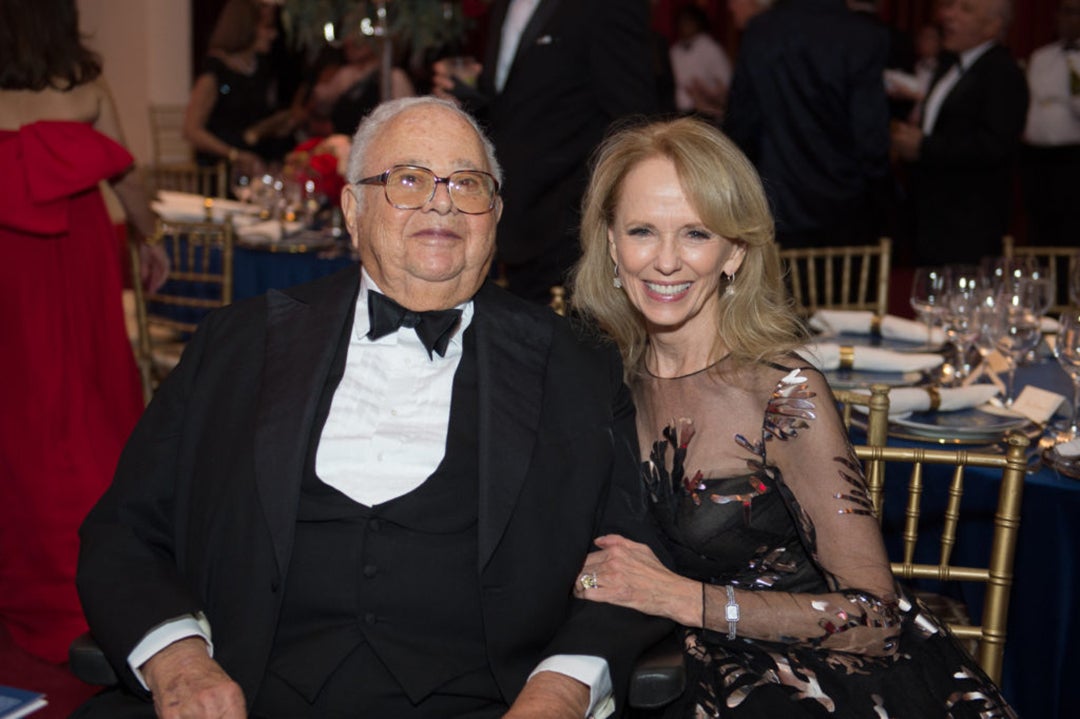Fayez Sarofim, the prominent investment adviser who generously donated to Rice after quietly but cannily steering the university’s endowment through decades of dramatic growth, died Saturday. He was 93.
Sarofim, whose investment counseling firm manages more than $30 billion in assets, was best known as shrewd investor, a generous philanthropist and an extraordinary patron of the arts museums of Houston. His firm assumed the management of Rice’s endowment when it was worth just $63 million.
“Fayez Sarofim was a remarkable force in Houston, an important figure in the management of our endowment and a bold leader for the expansion of the arts at Rice,” said President David Leebron. “It was a privilege to get to know him. Our city and our university have lost a great leader who made both immeasurably better, and his impact will never be forgotten on our campus.”
Sarofim had a profound and lasting impact upon Rice. The university’s new $25 million visual and dramatic arts building, financed with a lead gift from Sarofim, will bear his name. He also generously contributed to the construction of the George R. Brown Hall and funded three endowed chairs: the Fayez Sarofim Vanguard Professorship in Management, the Allison Sarofim Distinguished Teaching Professorship in the Humanities and the Fayez Sarofim Professorship in Science and Engineering.
But Sarofim’s influence on the university extended far beyond his acts of philanthropy.
“He managed the Rice endowment for a long time and he did it brilliantly,” said Melissa Kean, Rice’s recently retired Centennial Historian. “He is one of the most important and least known figures in Rice’s financial history.”
Sarofim served as chairman and co-chief investment officer of one of the largest and oldest privately owned investment counseling firms in the nation. After earning a bachelor’s degree in food technology from the University of California, he earned a master’s degree in business administration from the Harvard Business School. Within five years of founding his eponymous firm in 1958, he was managing the corporate retirement fund for Brown & Root and the Rice University endowment.
He served in a host of leadership positions with nonprofits including the Memorial Sloan Kettering Cancer Center; the Alley Theatre; the Houston Ballet Foundation; the Museum of Fine Arts, Houston; and the Houston Symphony Society. The Texas Business Hall of Fame honored him for his commitment to sound business principles, his leadership in the investment management field and his generosity to the community, particularly in health care and the arts.
Sarofim’s nickname was “The Sphinx,” a reference not only to his occasionally inscrutable demeanor but also his background as an immigrant from Egypt. He had a reputation for investing heavily in blue-chip stocks, a reflection of an unshakable faith in the economic possibilities of the United States. He was quoted as saying it took someone from abroad to recognize the true potential of America.
He once told Forbes magazine that at every turn in his years in business, “there have been hordes of doubters — worried men preoccupied with fears of lurking disaster. But look at what has really happened and promises to keep on happening.”
Sarofim built a multibillion-dollar fortune on his reputation as a shrewd stock picker, but he once said his most significant investments didn’t finance companies.
“Betting on people is the most important thing,” he said.

